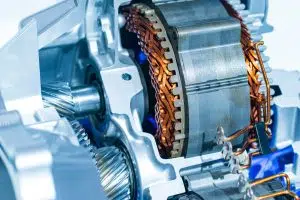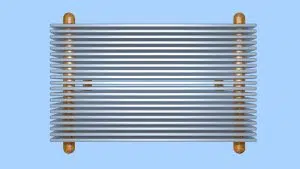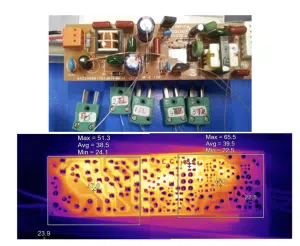Since the size of electronic components keeps on decreasing, the need for improved heat dissipation on these components keeps increasing. This dichotomy presents thermal engineers with a formidable challenge: how to design smaller coolers that dissipate more heat. Adding to the challenge, the fast-paced evolution of electronics means that the development time for the new cooler … [Read more...]
Thermal Management of Integrated Traction Drives in Electric Vehicles
This article reviews integration approaches and, by employing finite element analysis (FEA), compares thermal management solutions for the combined electric motor and power electronics systems for electric vehicles. Integration of power electronics into the electric motor helps achieve higher power densities in the electric traction drive systems. The benefit of integration … [Read more...]
Electric Motor Thermal Management for Green Transportation
Introduction Stringent greenhouse gas-emission legislations have accelerated the electrification of ground and air transportation. Since the electric motor is one of the core components of the electric drivetrain, improving its performance is a key enabler to better performance metrics of an electric drivetrain, i.e., higher power and torque density, better fuel economy (lower … [Read more...]
Statistic Corner: Comparing Populations
Introduction Previous articles in this series described the normal distribution and how it is used to relate probability and confidence levels [1, 2]. A practical application of the use of the confidence interval was to describe how to determine the range of values in which the true mean of a population falls within, based on the mean and standard deviation calculated from a … [Read more...]
Future Trends in LED Driver System Modeling
Introduction A decade ago, the major players in the lighting industry decided to make the transition to digital systems and set the pace in connected lighting. At present, only a few companies can maintain their leadership. As a self-fulfilling prophecy, the lighting landscape changed remarkably, with scattered competitors having access to internet of things (IoT) ecosystems … [Read more...]
- « Previous Page
- 1
- 2
- 3
- 4
- 5
- …
- 56
- Next Page »










